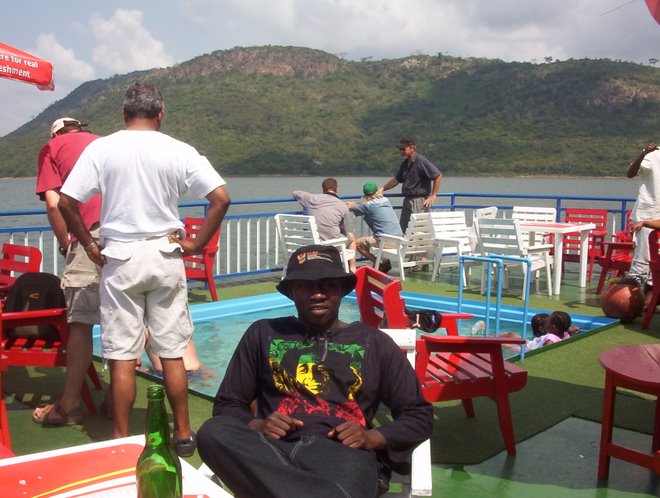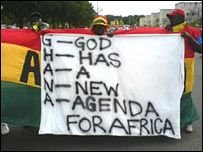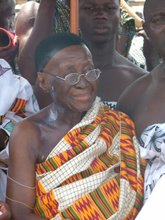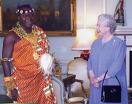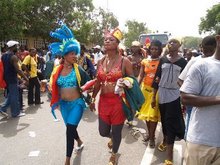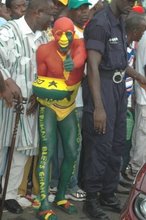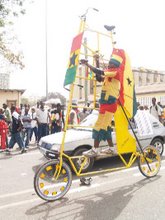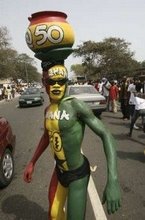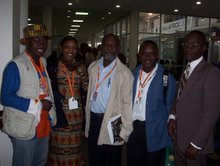DRIVERS FOND OF DISREGARD FOR TRAFFIC LIGHT SIGNALS IN KUMASI

“When you reach the traffic light, there is something you should know, red means: stop, yellow means: get ready, green means: go go go and go!”
This is a popular song on the lips of many kids in Ghana whom because of the song, are conscious of what every motorist or pedestrian should do when he comes across a traffic light.
Surprisingly however, the opposite of this popular rule is what many motorists in the Kumasi metropolis practice.
A traffic light, is a signaling device positioned at a road intersection, pedestrian crossing or other location in order to indicate which specific movement motorists should drive, ride or pedestrians should walk.
The Highway Code with regards to traffic light signals states that whenever there is RED it means 'Stop'. Wait behind the stop line on the road.
RED AND AMBER also means 'Stop'. Do not pass through or start until GREEN shows.
GREEN means you may go on if the way is clear but take special care if you intend to turn left or right and give way to pedestrians who are crossing.
AMBER means 'Stop' at the stopline. You may go on only if the AMBER appears after you have crossed the stop line or are so close to it that to pull up might cause an accident.
A GREEN ARROW may be provided in addition to the full green signal if movement in a certain direction is allowed before or after the full green phase. If the way is clear you may go but only in the direction shown by the arrow.
Alternately flashing red lights mean YOU MUST STOP at level crossings, lifting bridges, airfields, fire stations and others.
The Highway Code is essential reading for everyone. Its rules apply to all road users, drivers, motorcyclists, cyclists, pedestrians as well as even horse riders although in Kumasi and in the entire country, horse riding on the road is not popular.
Many of the rules in the Code are legal requirements, and if you disobey these rules you are committing a criminal offence. One may be fined, given penalty points on their license or be disqualified from driving. In the most serious cases one may be sent to prison.
Although failure to comply with the other rules of the Code will not, it itself, cause a person to be prosecuted, but the code may be used in evidence in any court proceedings to establish liability.
Knowing and applying the rules contained in the Highway Code could significantly help reduce road accident casualties. Again cutting the number of deaths and injuries that occur on the roads every day is a responsibility we all share and the Highway Code can help discharge that responsibility.
I have observed with keen interest that in the Kumasi metropolis many motorists have disregard for traffic lights. They tend to move faster in an attempt to cross a red light the moment they are approaching and see the AMBER on even though the Highway Code preaches against that.
I was mesmerized the other time, when I saw a driver on television saying the AMBER light means, go faster even if you have not crossed the line before red catches up with you. This driver was apparently being tested on television on an outreach sensitisation programme by the National Road Safety Commission (NRSC).
I told myself no wonder drivers in Kumasi tend to speed at traffic lights the moment the AMBER shows even before they get there.
One other behavior I have observed about motorists in Kumasi, especially commercial taxi drivers is that, they tend to toot their horns haphazardly even to an extent that, when they are behind a vehicle at the traffic lights, and it turns green, hardly do they allow a second to pass than you hear them tooting to persuade the one in front of them to move.
In many of the cases, the drivers ahead would make an attempt to move yet those behind them would toot their horns loud to beckon them to move.
The disregard for traffic lights, especially jumping of the red light has become very common that I wondered the other time if the law enforcing agencies were aware of the menace.
It was then gratifying to hear that the Police Motor Traffic and Transport Unit (MTTU) in Kumasi has resorted to the use of digital cameras to start arresting offending drivers at traffic light spots in the Kumasi metropolis.
It was gathered that the police place the camera men at vantage points with their focus on the traffic lights and that they capture any offending driver on tape as well as inform police dispatch riders who normally lay ambush via a walk-talkie for the arrest of the offending driver.
According to Ashanti Regional Commander of the MTTU, DSP James Sarfo Peprah his outfit was now waging the war on red light jumpers.
He explained that within the shortest possible time that the digital camera was introduced, many offending drivers have been arrested and prosecuted accordingly.
He mentioned for instance that on a two day pilot exercise at the Amakom traffic lights about 20 drivers were arrested for open disregard for the traffic lights there by jumping the red light.
It is the hope that the exercise would be sustained so as to bring recalcitrant drivers to book. It is believed that if this was done, sanity would prevail at the traffic lights.





